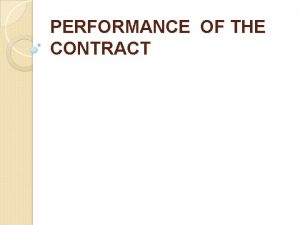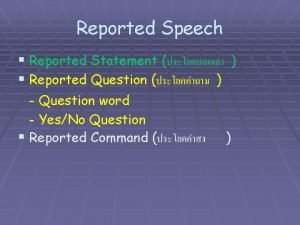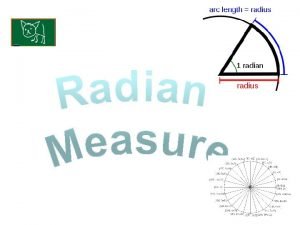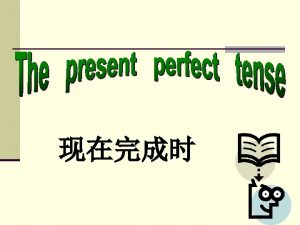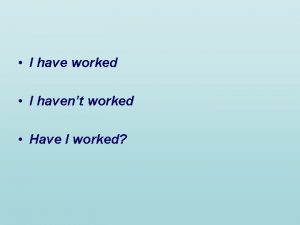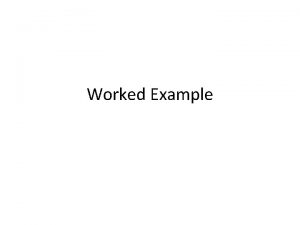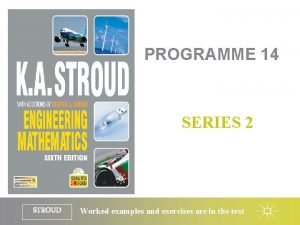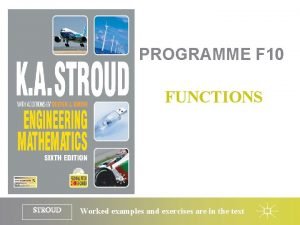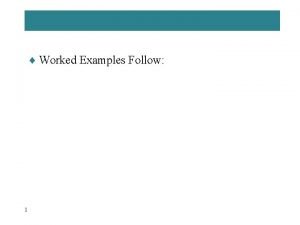Using Worked Examples Dr Mok Y F What



















- Slides: 19

Using Worked Examples Dr. Mok, Y. F.

What are Worked Examples ? A step-by-step demonstration of how to perform a task or solve a problem Reduce load in working memory Efficient for learning new tasks

Learning by Worked Example Present A Problem Work Out The Solutions Explain • why various steps are taken • the rationale for the steps Attain the principles & steps in solving new problems

Advantages Aid Transfer Reduce Effort Lessen Time Reduce Cognitive Load Form Automation Expand Cognitive Capacity

Amazing Result! Zhu and Simon (1987) : Worked examples could replace conventional classroom teaching. A 3 -year math course was completed in 2 years by emphasizing worked examples.

Near Far Learning Transfer Learning from examples 215 14 157 Learning by doing 495 15 300 Seconds used Learning Correct Learning from examples 625 62% Learning by doing 1406 28% Effort Rating 5. 20 6. 10 Mayer (2003) adapted from Cooper & Sweller (1987) & Paas & van Merrienboer (1994)

Worked Examples : How • Include a problem statement • A procedure for solving the problem • Show other similar problems might be solved • Show an expert’s solving model for studying • Step-by-step solutions • Include auxiliary representations of the problem (e. g. diagrams) • Purpose: to illustrate a principle or

#1 Use Worked Examples in Teaching Replace some drilling tasks or practice problems with worked examples Strategies: Try this or this Insert a question to make Leave missing parts the learner in the practice problem to study the example

#2 Include Elaborated Procedures Percent correct on transfer test Short version 25% Elaborated version 69% Mayer (2003) adapted from Reed, Dempster, & Ettinger (1985)

#3 Minimize Cognitive Load Use R textual explanations and R auxiliary representations audio- diagrams graphics

#4 Chunking • Break into sub-problems • Build clear steps for each sub-problem • The steps should point to a subgoal • Affix a label / annotation to the subgoal (or visually isolate the subgoal to make it outstanding) Catrambone & Holyoak, 1990

#5 Explain Underlying Principle • Explain underlying goal structure • Develop useful generalizations • Help learners to modify old method rather than applying it without adaptation

Basic Model of Worked Example Sub-problem Step 1 Step 2 Step 3 Principle/ Rule Sub-problem Sub-goal Worked Problem Sub-problem Visual representation Aural presentation

#6 Variability for Transfer A simple + A complex example (if time is a constraint) Example problem A single example + A set of procedures (more examples with varying surface stories are good for variability) Reed & Bolstad, 1991

#7 Near Vs. Far Transfer Near Transfer Far Transfer suitable for procedural tasks suitable for problem solving tasks example • one job-realistic example + • clear steps example • several examples • different cover stories • same underlying principle

# 8 Sequencing Example 1 Practice 1 Example 2 Practice 2 Example 1, Example 2, Example 3, Practice 1, Practice 2, Practice 3, Example 3 Practice 3 alternating is better than blocked Trafton & Reiser, 1993

# 9 Generalizing • Plan a series of worked examples • Each illustrates a key feature • Students immediately work on similar problems • Progressively illustrate a key dimension

# 10 Lesson Design Good for new tasks and novice learners. First sessions: • study worked examples • do practice-based problems Later sessions: • solve problems with principles learned, not the procedures

References The guidelines are adapted from Clark & Mayer (2003) Atkinson, Derry, Renkl, & Wortham (2000))
 Yong mok hin
Yong mok hin Mok grill
Mok grill Mok heng ngee
Mok heng ngee Tkanovy mok
Tkanovy mok Tony mok md
Tony mok md Ricky mok
Ricky mok Diana mok
Diana mok Tony mok md
Tony mok md Flood routing types
Flood routing types I stumbled in his hob nailed wake
I stumbled in his hob nailed wake Guillaume de machaut worked primarily in
Guillaume de machaut worked primarily in How feudalism worked
How feudalism worked Hopkins essays that worked
Hopkins essays that worked Calorimetry 2 chemsheets
Calorimetry 2 chemsheets Today reported speech
Today reported speech Josquin desprez was a contemporary of
Josquin desprez was a contemporary of She worked hard. she made herself ill
She worked hard. she made herself ill Prime mover of the arm
Prime mover of the arm Conditional sentence type 3
Conditional sentence type 3 Area of a sector radians
Area of a sector radians
